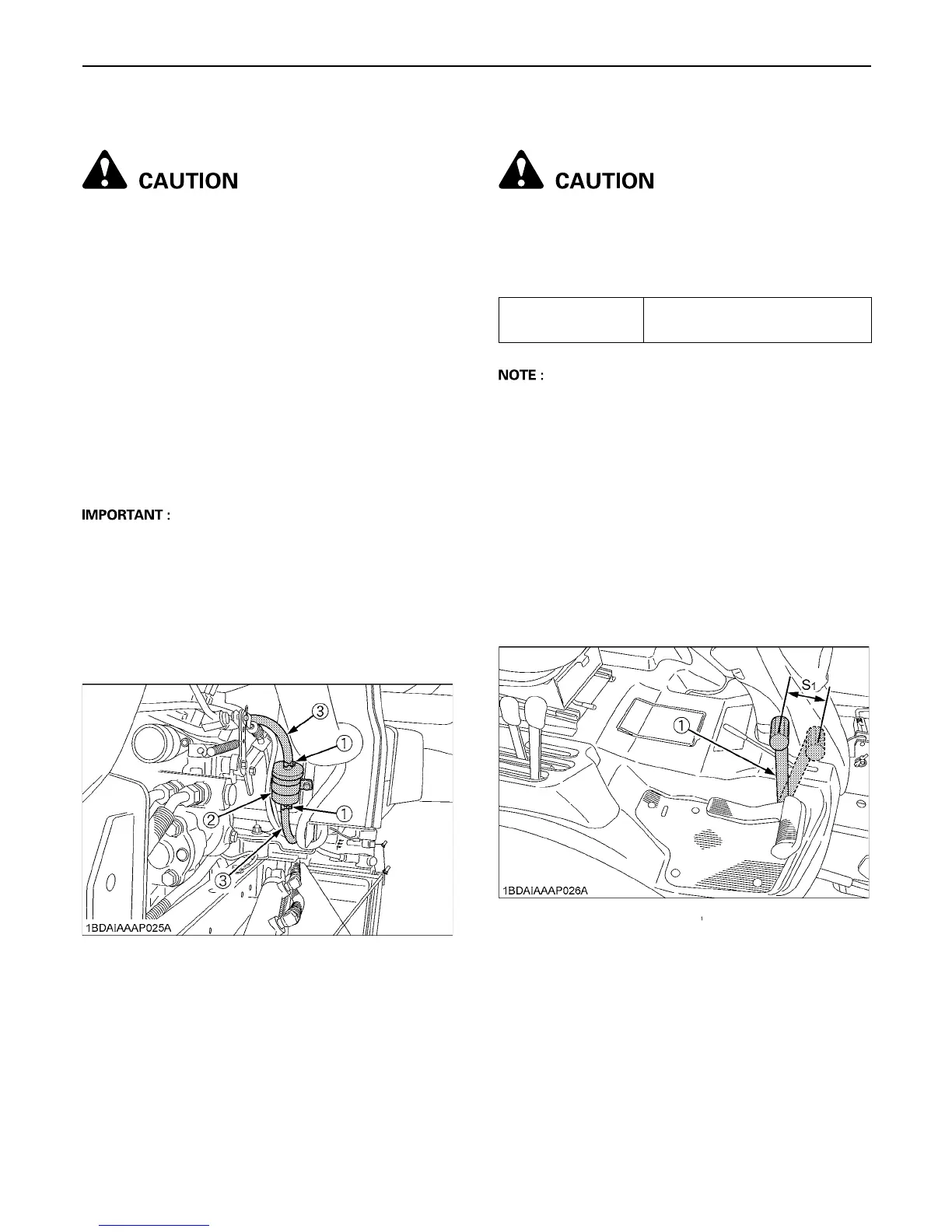41PERIODIC SERVICE
BChecking Fuel Lines and Fuel Filter
To avoid personal injury:
A Be sure to stop the engine and remove the key
when attempting to make the following checks
and changes.
A Never fail to check the fuel lines periodically.
The fuel lines are subject to wear and aging.
Fuel may leak out onto the running engine,
causing a fire.
The fuel line connections should be checked annually or
every 100 service hours, whichever comes first.
1. The fuel line is made of rubber and ages regardless of
service period.
2. If the fuel line and clamps are found to be damaged or
deteriorated, replace them.
3. Check fuel filter, if it is clogged by debris or
contaminated with water, replace it.
A When the fuel line is disconnected for maintenance or
repair, close both ends of the fuel line with a piece of
clean cloth or paper to prevent dust and dirt from
entering. In addition, particular care must be taken not
to admit dust and dirt into the fuel pump. Entrance of
even a small amount dust or dirt cause premature
wear and malfunction of the fuel pump and injector
components.
BChecking and Adjusting Brake Pedal
To avoid personal injury:
A Park the machine on a firm and level surface.
A Stop the engine and chock the wheels before
checking the brake pedal.
A If the turn assist brake device is attached, adjust the
brake pedal. (See Instruction manual for Turn Assist
Brake Pedals.)
A If the speed set device is attached, remove the speed
set release rod before adjusting, and replace it after
adjusting. (See Instruction manual for Cruise Control.)
1. Release the parking brake.
2. Slightly depress the brake pedal and measure free
travel at the top of pedal stroke.
3. If adjustment is needed, loosen the lock nut and turn
the turnbuckle to adjust the rod length within
acceptable limits.
4. Retighten the lock nut.
(1) Hose clamp
(2) Fuel filter
(3) Fuel line
Proper brake pedal
free travel
20 to 40mm (0.8 to 1.6 in.) on the
pedal
(1) Brake pedal (S ) Free travel
